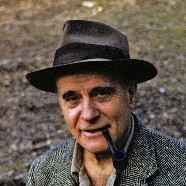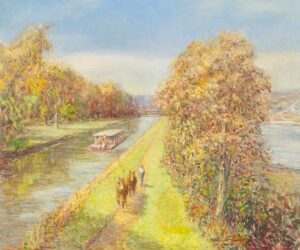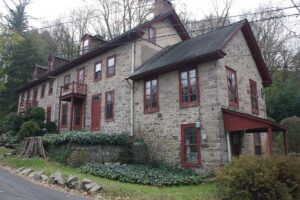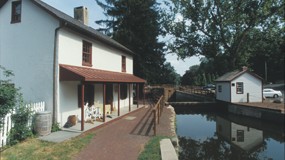 Something new is brewing at Lock 11 in New Hope. A new exhibition commemorating the140th Birth Anniversary of William Francis Taylor will open in the old concession building next to the Locktender’s House at 145 South Main Street New Hope. The exhibit will provide a chronology of the life and times of Taylor and his contribution to preserving the Delaware Canal and Towpath.
Something new is brewing at Lock 11 in New Hope. A new exhibition commemorating the140th Birth Anniversary of William Francis Taylor will open in the old concession building next to the Locktender’s House at 145 South Main Street New Hope. The exhibit will provide a chronology of the life and times of Taylor and his contribution to preserving the Delaware Canal and Towpath.
Who was William Francis Taylor?
Before the Friends of the Delaware Canal came into being, there was the Delaware Valley Protective Association, and William Francis Taylor was its first president. Formed in 1933, the DVPA encouraged the state to restore and maintain the Canal. Later, the organization was also responsible for securing an essential historic national landmark designation, protecting the Canal and towpath for generations to come.
In 1939, Taylor launched a magazine titled Towpath Magazine, a monthly publication focused on preserving “the beauty and value of the valley.” He wrote numerous articles focused on nature and the environment. Notably, the significant beauty of the Delaware River Valley landscape and that of the canals—both the Delaware Canal and the Delaware and Raritan Canal—were frequent subject matter in his writing and his artwork, calling attention to the importance of their preservation.
An Artist of Distinction

As an artist, William F. Taylor was considered part of the New Hope Impressionist School. Taylor was a student of William Lathrop and became well known for his landscapes and depiction of Washington Crossing the Delaware. His works can be found at the Corcoran Gallery and the Metropolitan Museum of Art.
William F. Taylor was born in Hamilton, Ontario, Canada, where he started his art career as a lithographer and illustrator. In 1905 he moved to New York and studied with John Sloan at the Art Students League. Taylor had swiftly excelled in the illustration field and was appointed art director of the New York Journal in 1908. He held this position for several years while also working as a freelance artist and illustrator for national publications such as Harpers and Century magazines. For many years, Taylor worked for the A.G. Spalding Sporting Goods Company, creating the original art for most of their advertisements. Around 1910, while visiting Phillips Mill, Taylor met fellow artist Mary Smith Perkins, who was studying with his friend William Lathrop. A relationship developed, and in 1913, they married and moved to Lumberville, Pennsylvania. In that same year, Taylor became a naturalized citizen.
Living on the Delaware River, a stone’s throw away from the home of Daniel Garber, Taylor was surrounded by a wealth of subjects for his art. His paintings possess a distinct and appealing style, employing a bright, fresh palette using both a palette knife and brush to apply his paints. Painting the majority of his work within several miles of his home, Taylor also painted on Long Island in New York, and out west in the Yosemite Valley. However, he felt his strength as a painter was his ability to capture the beauty of Bucks County.
Taylor was a member of the Salmagundi Club, the Phillips Mill Community Association, the New Hope Artists and Writers Association, the Delaware Valley Protective Association, and the Asbury Park Society of Fine Art.
He exhibited at the Province of Ontario (1902 medal), the National Academy of Design, the Society of Independent Artists (1917), the Salmagundi Club (1924, 1927, and 1932 prizes), the Philadelphia Art Club (1924 prize), the Philadelphia Art Alliance (Purchase Prize), and the Phillips Mill.
A Persistent Preservationist

William F. Taylor is remembered today not only for his fine impressionist landscape paintings but also for his organizing and writing abilities. In October 1928, he was appointed to head a subscription committee that would ultimately be responsible for purchasing the Phillips Mill for use as an exhibition space and community center. In 1963, he published a history of the mill. Additionally, he published several articles on local artists. Taylor remained active until his death at age eighty-seven.
Taylor’s love of history and preservation was also evident in his purchase and restoration of the Cuttalossa Inn. He acquired the 180-year-old building in 1930. He also owned, lived in, and rented rooms at the Hard Times Tavern.

